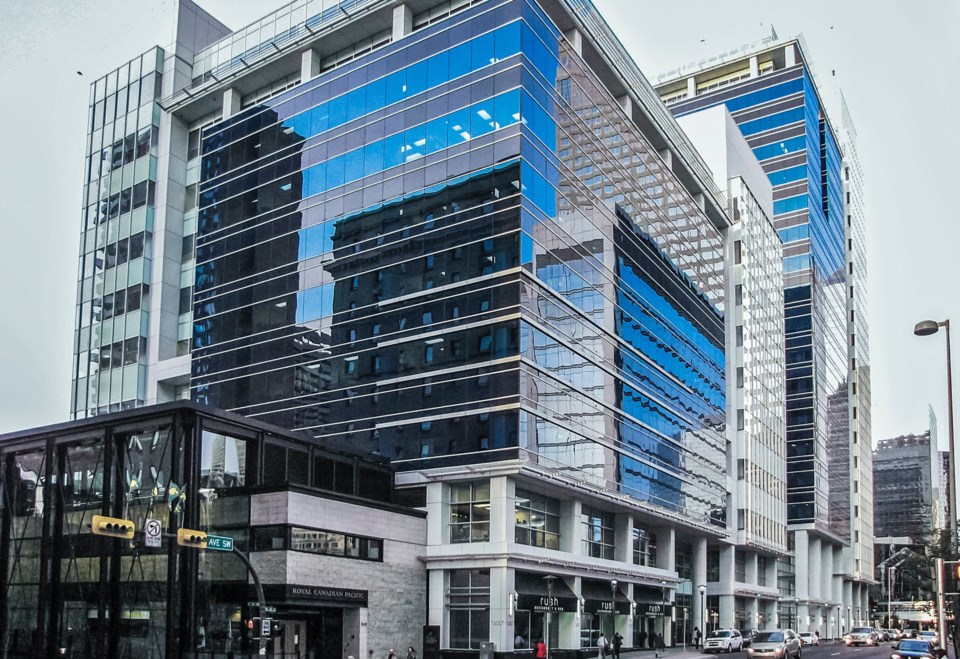At US$10.68 a barrel, Western Canada select was selling for about same price as gram of cannabis in early April, representing the latest blow to the Alberta economy and the teetering office market of downtown Calgary.
The 50 per cent drop in oil prices since early March is laid on top of the COVID-19 crisis to create a whirlwind of trouble for Calgary office landlords already suffering the highest vacancy rates in North America, according to CoStar Canada.
“It is the ultimate double-whammy,” said Roelof van Dijk, director of market analytics at CoStar Canada, part of a data and market analytics company based in Washington, DC, that released an in-depth report on Calgary’s office sector April 7.
The collapse of oil prices – due to a price war between producers Saudi Arabia and Russia and plunging demand – having the biggest impact on Calgary’s downtown office sector, van Dijk said.
And, even if the price war ends and oil prices begin to recover, office landlords will continue be in “pain” for one year and likely longer, he warned.
Because oil prices are so low and demand has fallen due to the pandemic, “oil is being stockpiled around the world,” van Dijk said. As well, he added, major oil companies have slashed capital expenditures, which will take a long time to recover.
Compounding the problem is the growing glut of sublease space, which until recently had represented half the vacant space in downtown Calgary, which meant landlords were getting at least some rent. Today, though, subleases account for just 20 per cent of vacancies.
CoStar’s report found 11 million square feet of vacant space in downtown Calgary; 8.7 million square feet of direct space with landlords and 2.3 million square feet of sublet space.
CoStar had forecast earlier this year that the downtown office vacancy rate could fall from the current 21 per cent to under 19 per cent by 2024. Now the forecast is for vacancy rates as high as 25 per cent by the third quarter of 2020.
“The prospect of a reprieve has been replaced with the knowledge that additional pain for Calgary, Alberta and Canada is now on its way,” van Dijk said.
Some office tenants are getting rent relief from well-financed landlords, such as real estate investment trusts (REITs) and pension funds, he added.
Morguard REIT, for instance amended the lease for Obsidian Energy Ltd. at its Penn West Plaza, a downtown Class A office complex of 636,500 square feet, all fully leased by Obsidian.
Under the deal, Obsidian will receive a rent abatement to $833,333 per month, net of sublease space, until January 2025.
Morguard estimates it will take a $6.5 million to $7 million loss in annual operating income due to the abatement.
“Not all Calgary landlords can afford to offer such rental relief,” van Dijk understated.
A bright side is that anyone seeking downtown Calgary office space will find lease rates that are lower than in Calgary’s suburbs or in any other major Canadian city.
The average asking price for downtown office leases, even in newer Class A buildings, is $12.65 per square foot, and van Dijk said it could drop into single digits. As a comparison, suburban office leases average $20 per square foot, due to the wider diversity of tenants has kept vacancy rates in the 10 per cent range.
“We are seeing tenants who have no reason to be downtown leasing prime office space because it is so affordable,” van Dijk said.



